#David-Jeuniaux
Photo

A sultry 1938 MG TA Tickford, in a delicious red. (Jeuniaux David and Retro & Vintage Cars) - source Classic MG Magazine.
57 notes
·
View notes
Text
How to Spend Your Time like a Nerd in Cancun
Words from our Scanbassador David Jeuniaux, currently venturing through Cancun as part of a South American tour, armed with his camera and a strong passion for culture, photogrammetry and 3D printing!
When I say the word vacation, what do you picture? I bet it would involve a blue sea, palm trees, white sand and overwhelming heat. Now add Mayan ruins and a plethora of tourists, and you will have a good idea of what Cancun is like.
I was there with my beloved girlfriend and, like a massively proud nerd that I am, I spent most of my time at archaeological sites and museums.
Two of my passions are History of Ancient Civilizations and Photogrammetry, and this trip is a great opportunity to mix them in a giant “spend 8 hours per day in museums and piss girlfriend off” kind of way.
In this article, I will talk about the Museo Maya de Cancun (MMC), the most postcard-ready place in the world.
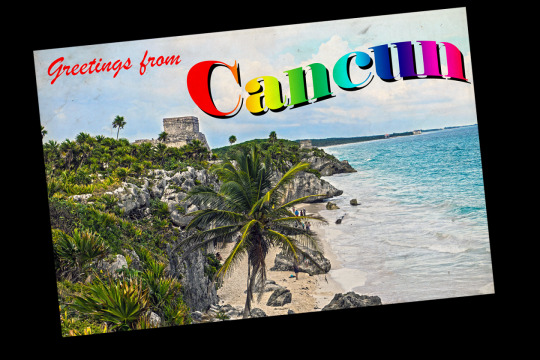
But let’s get to the start of it, shall we?
Inaugurated in 2012, the MMC is one of the latest and most modern museums in the country. Located right in the Zona Hotelera, it is the spot you don’t want to miss, when Chaac, the god of rain, in not chic. (My apologies for the lame joke.)
The MMC is divided into 3 rooms. Although that doesn’t seem like much, they are literally filled to the brim with treasures from all around Mexico.
The first room is where they display all the magnificent artifacts that have been found in the state of Quintana Roo (where Cancun is located).
This is one of the richest departments of the country, culturally and economically. But it relies so much on tourism that it can be overwhelming. We actually passed by a large crowd thinking it was some kind of amusement park only to notice later that it was, in fact, Mayan ruins.
When you look at the map below, it can be hard tell where the ruins end and where the funfairs begin.
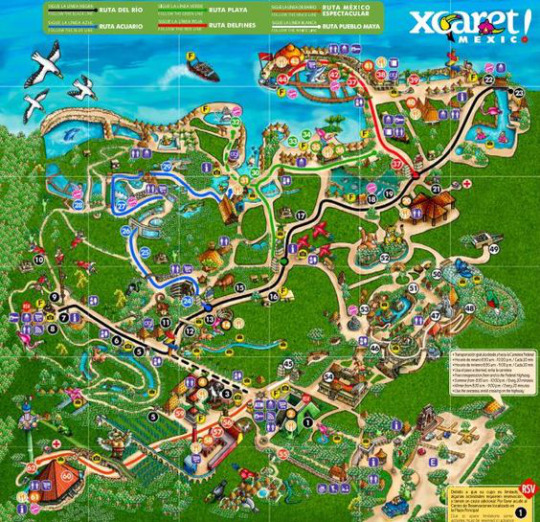
...and then, after your cotton candy, don’t miss out our reenactment of a Mayan sacrifice. It is a blast!
But all in all the MMC still managed to gather an extensive collection of artifacts, here are a few examples. And yes, now’s the time I start linking STL files.
Stele with Spiral Writing [download STL]
The first item is a stele with Mayan writing on it. “Not very spectacular.” you might think, but what is peculiar about this one is that the text is written in spiral. From what I can gather, it is a one of a kind. Most steles are written in block in two columns from top to bottom and from left to right. If this interests you, follow this link. I could not find more info about this one except that it was found in the ruins of Coba and was carved during the Golden Age of the Maya, between 600 and 850 AD. The description of the stele doesn’t include a translation, so if you have a linguist friend, print this out for him, it will make a great mind puzzle gift.
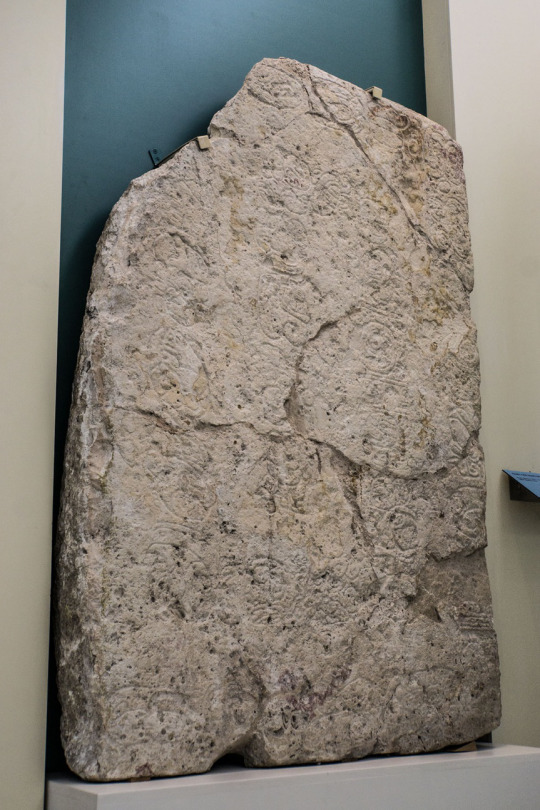
Nakawé smells like a coyote. Tanok
Architectural Features
I put the two next artifacts together because they both came from the same building. These are stucco reliefs from the ruins of Oxtankah. They were dated between 650-850 AD.
The facades of the Mayan buildings were richly decorated and painted with scenes associated with divine rulers and supernatural beings.
The first one represents the face of a man with a headdress, probably a noble, and the second is the head of a bird, most likely an eagle.
1) Architectural Feature Bird [download STL]
2) Architectural Feature Head [download STL]
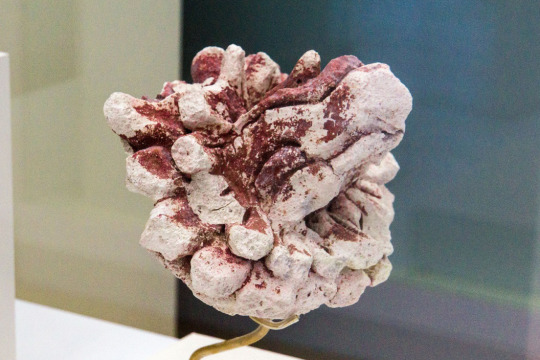
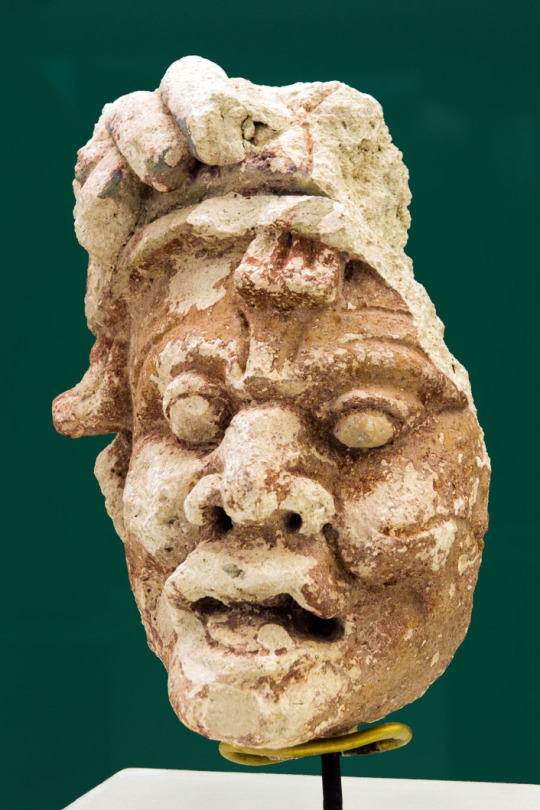
And that’s about it for that room. There were so many other things to scan, but the problem is that the museum has large windows and the sun there is so bright, leading to reflection, leaving me unable to scan more artifacts. But luckily in the next room a lot of items were uncovered.
The second sala in the museum is dedicated to the Maya as a whole. It features artifacts from all around Mexico. I spent most of my day there and made friends with the attendant… just kidding, museum attendants hate photogrammeters!
Monkey In Noble’s Clothes
I’d have to say this is my favorite piece. Even though I know that dressing up a monkey in clothes is sort of animal ill-treatment, I can’t help but giggle when I see one. So it makes me laugh internally when I picture the Maya having the same kind of goofy tradition a thousand years ago.
The Maya associated the monkey with writing, knowledge and the arts. It was also associated with pleasures such as gluttony, sexuality, dance or music; all typical entertainments of the Mayan elites.
This piece dates back to the post-classic Maya period, between 900 and 1200 AD, and was found at Chichen Itza.
[download STL]
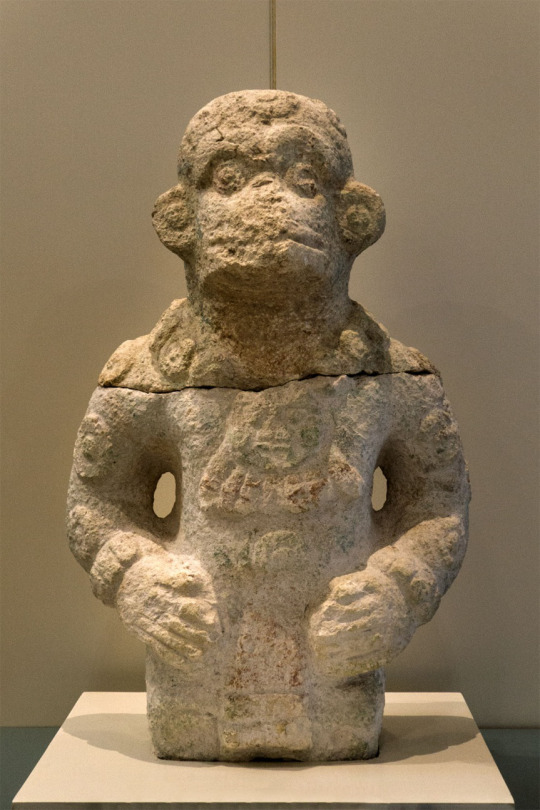
The Hatted Lord
This bust was found in the ruins of El Rey, located at the seaside of the Caribbean. It represents one of his lords, dressed elegantly with earmuffs and a headdress. There is a depression in the top of the head, meaning it was also used as a censer.
Treat yourself, print it and use it as an ashtray!*
[download STL]
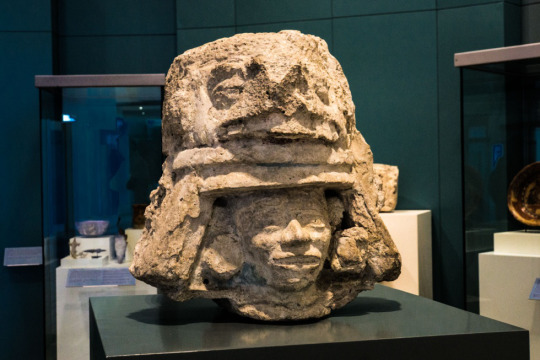
*Mayan curse included
Reliefs with Warriors
This is one of my favorites too.
This artifact represents a pack of Mayan warriors aligned like the seven dwarfs going to the mine, and sculpted like some Super Deformed figurines. Look at those dainty little feet!
This object is really worth printing because like most bas-relief, a picture doesn’t render it finely, you’ll need to print it in 3D to see all the little details.
Found in Chichen-Itza and dated between 900 and 1200 AD.
[download STL]

Heigh-ho, heigh-ho! To murder you we go.
And here we are at the last room. It is where they display temporary exhibitions. When I was there, the attention-grabbing theme was “sexuality and motherhood”.
As you can imagine there were lots of interesting things I could have scanned there, but again, the glass/sun combo screwed up my plan.
But the one I managed to scan is so good, it made my disappointment go away.
Metaphorical statue with spike
This sculpture represents the penetration of the Earth. (kinky) Archeologists believe that it was buried with the reproductive organ at ground level, probably during a farming ritual.
So go ahead, print this one out and bury it in your garden to improve your crops just like the Mayas did!
[download STL]
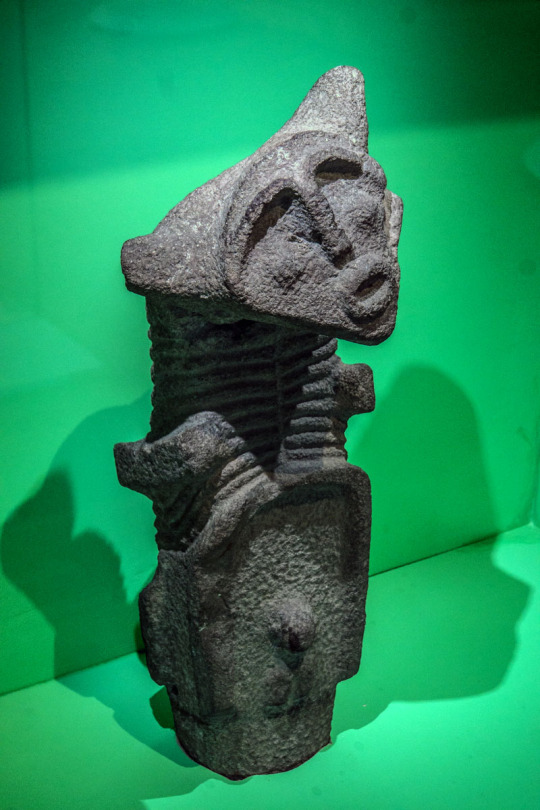
But remember kids, the balls have to drop to the ground.
And that’s about it for this museum. I’d have to say, I had an awesome time there.
I was a bit frustrated about the reflections on the glass cases, and I wanted the freedom to take pictures without the cases. There was a good chance they would say no, but I asked anyway. So on my way out I pleaded to talk to the person responsible, and they introduced me to an archeologist that worked there, Dr. Antonio Reyes. I talked with him about my project, and he told me that he too is a photogrammeter! It was the first time I had met another scanner, and we talked for a long time, mainly about the interest of photogrammetry for research and education. That encounter comforted me that this technique can also be used to help researchers in their studies, and not only be a fun way to waste your holiday.
All of the objects mentioned in this article have been made available on Scan the World, many thanks to David for his contributions. Be sure to track his progress as he travels across South America by following this blog!
You can download all of his scans and follow his profile on MyMiniFactory here!
https://www.myminifactory.com/users/eurotronic
~Happy Scanning!
#David-Jeuniaux#3dprinting#photogrammetry#3dscanning#scantheworld#myminifactory#south-america#travel#photography
2 notes
·
View notes